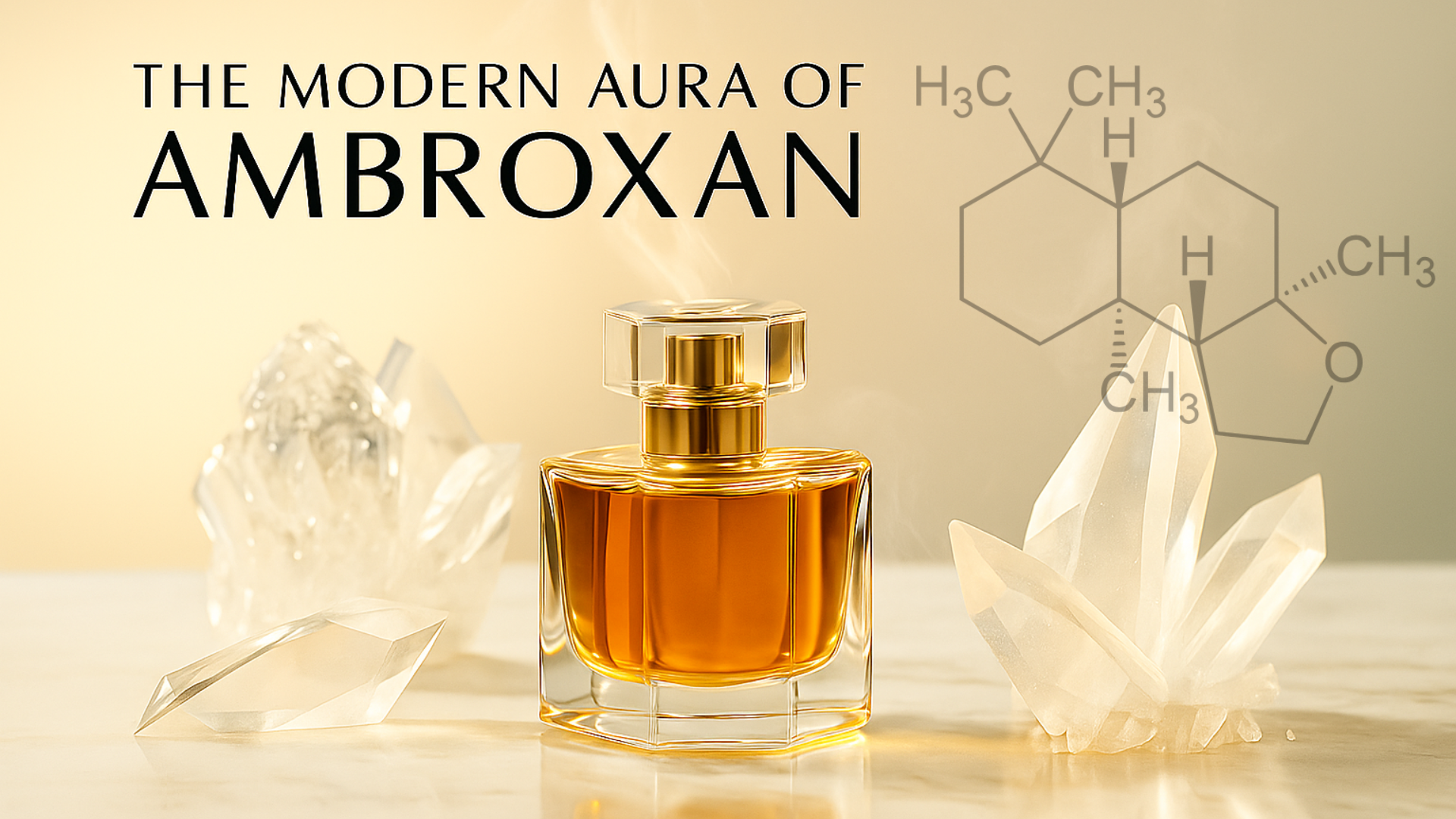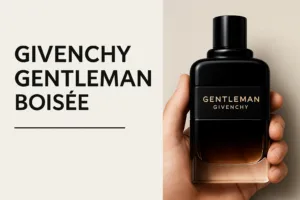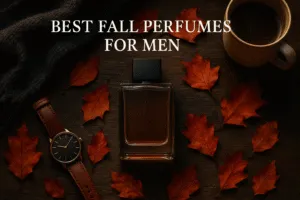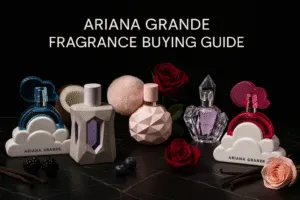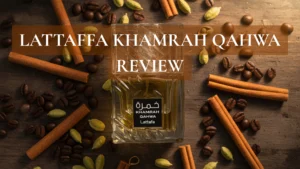Introduction: Why Ambroxan Matters in Perfumery
When people ask me at Liquo, “What is that addictive note in Dior Sauvage that makes it so recognizable?” or “Why does Juliette Has a Gun Not a Perfume smell so clean yet last so long?” the answer almost always involves Ambroxan, so I will try to educate on What Is Ambroxan in Perfumery.
Ambroxan is a synthetic fragrance molecule that has become the backbone of modern perfumery. It captures the warm, musky, slightly salty radiance of natural ambergris, but without whales, rarity, or inconsistency.
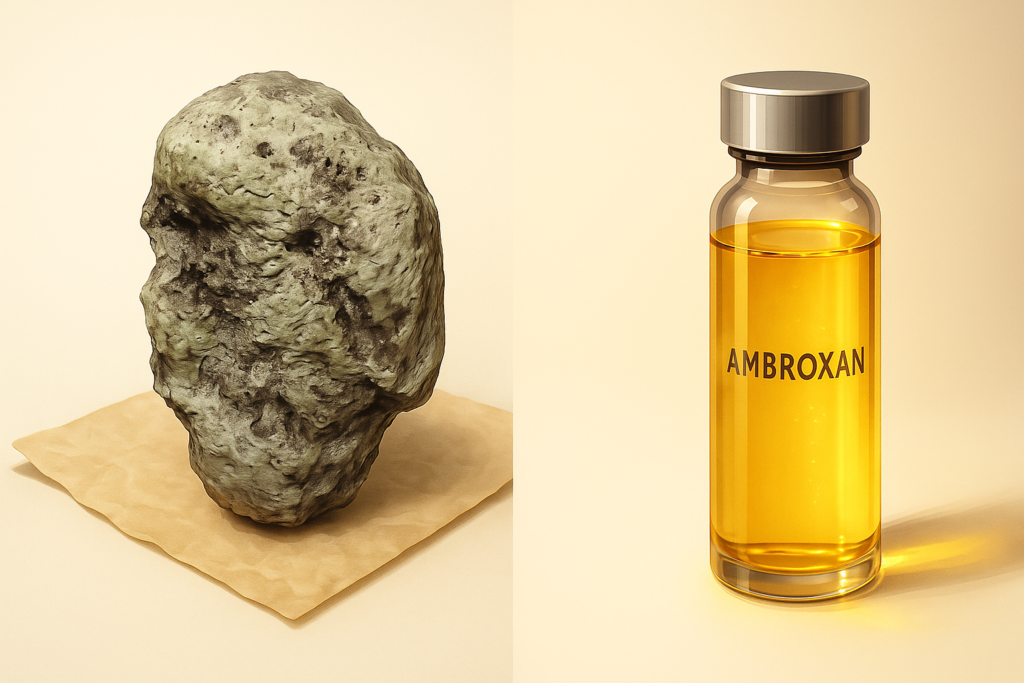
So, what is Ambroxan in perfumery? It is chemistry, sustainability, and artistry wrapped into one. Ambroxan is the reason fragrances project across a room, last 12 hours on your skin, and smell “clean but magnetic.”
In this guide, I’ll take you through everything you need to know:
- What Ambroxan is and how it was invented
- What it smells like and why people describe it as addictive
- Why it replaced ambergris in modern perfumery
- The perfumes that made Ambroxan famous
- FAQs that answer quick search queries for readers
Quick Summary for Readers in a Hurry
- What is Ambroxan in perfumery? A synthetic molecule created by Firmenich in the 1950s to replicate ambergris.
- Scent profile: Musky, woody, ambery, mineral, slightly salty, clean-skin effect.
- Natural source: Derived from sclareol, a compound found in clary sage (Salvia sclarea).
- Why important? Long-lasting, sustainable, enhances projection, adds transparency and radiance.
- Famous perfumes with Ambroxan: Dior Sauvage, Molecule 02, Juliette Has a Gun Not a Perfume, Prada Luna Rossa Carbon, MFK Aqua Universalis Forte.
- Best suited for: Minimalist fragrances, layering, office-safe scents, and modern signature perfumes.
What Is Ambroxan in Perfumery?
Ambroxan is an aroma-chemical, meaning it is a single, lab-created molecule used in perfumery. It belongs to the ambery-woody-musky family of scents and was developed to reproduce the addictive qualities of ambergris, one of the rarest and most luxurious natural perfume materials. Read this guide to understand more about fragrance families!
Natural ambergris is formed in the digestive tract of sperm whales and historically washed ashore in waxy lumps. It was treasured for centuries for its fixative power and unique scent, but supply was unpredictable, and harvesting raised ethical issues.
Enter Ambroxan. In the 1950s, chemists at Firmenich figured out how to create a molecule from clary sage derivatives that smelled strikingly similar to ambergris, with even greater versatility.
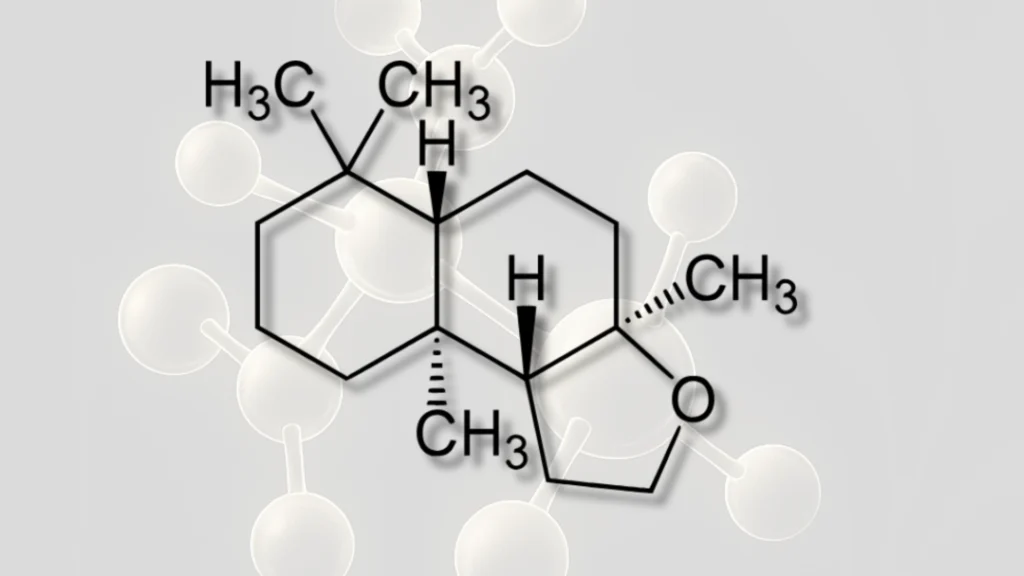
As The Perfume Society explains:
“Ambroxan has become one of the most important building blocks of modern perfumery. It gives fragrances a velvety warmth and a radiant, long-lasting diffusion.”
This made Ambroxan not only a replacement for ambergris but also a game-changer in how perfumes were composed.
Where Does Ambroxan Come From?
Ambroxan’s story is inseparable from ambergris. For centuries, ambergris was one of perfumery’s crown jewels. It smelled warm, musky, salty, and radiant, but it was incredibly scarce. Some cultures burned it in incense, others infused it in medicine or aphrodisiacs. In Europe, it was blended into royal perfumes and even edible delicacies.
The problem was supply and ethics. Ambergris comes from whales, and by the mid-20th century, the perfume industry needed a reliable, sustainable alternative.
Firmenich’s breakthrough was discovering that sclareol, found in clary sage, could be chemically transformed into Ambroxide, then further refined into Ambroxan. This gave perfumers a renewable, cruelty-free source of the same addictive scent family.
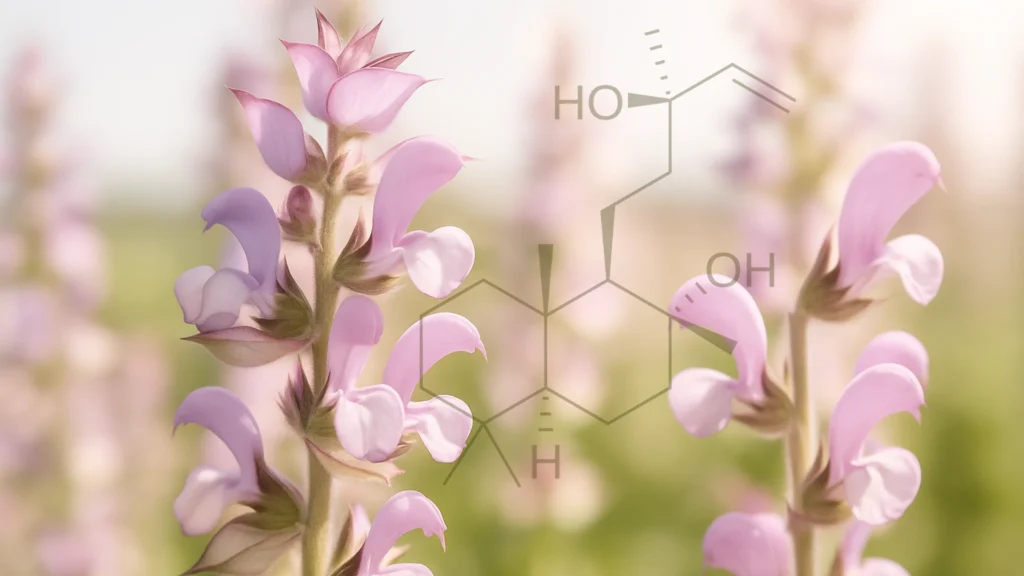
According to Givaudan:
“Molecules like Ambroxan allow perfumers to work with precision. Where natural materials vary, synthetic notes provide stability and repeatability across batches.”
That consistency is why you smell Ambroxan in everything from niche perfumes to $100 million blockbuster releases.
What Is Ambroxan in Perfumery and What Does It Smell Like?
This is the question I get the most at Liquo: “What does Ambroxan smell like?”
The answer depends on how sensitive your nose is. Some people find it strong, metallic, and almost sharp. Others barely smell it at first, but notice how it radiates in the air. Some even describe it as addictive.
Scent Profile of Ambroxan:
- Woody and ambery: Warm, velvety, and slightly resinous.
- Musky and clean: Evokes the scent of skin, fabric warmed by sunlight.
- Mineral and salty: Like sea breeze or sun-dried driftwood.
- Transparent yet powerful: Subtle up close but projects in the air.
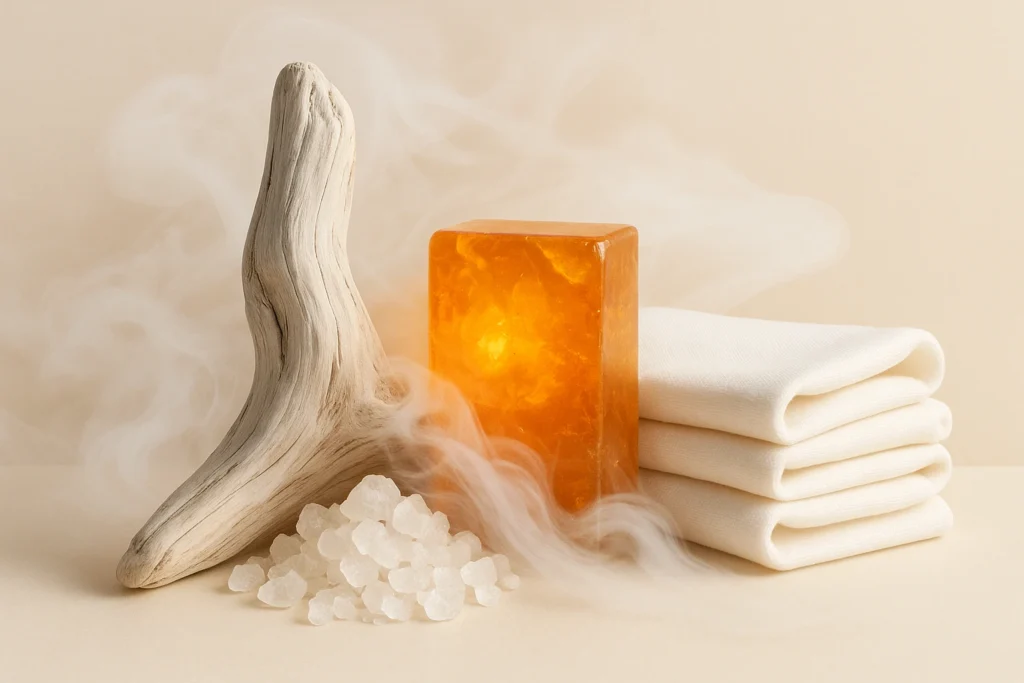
Compared to other perfume notes:
- Ambergris: Ambroxan is less animalic, more consistent.
- Musk: Musk is fluffier and more powdery, Ambroxan is saltier and mineral.
- Oud: Oud is smoky and resinous, Ambroxan is clean and airy.
As Luca Turin notes in Perfumes: The A-Z Guide:
“Ambroxan has the strange ability to smell of almost nothing and yet of everything at once. It lends perfumes a body, a warmth, and a diffusion that feels like second skin.”
This duality: subtle on skin, radiant in the air, is why Ambroxan has become a modern favorite.
Why Is Ambroxan So Popular in Modern Perfumery?
Ambroxan isn’t just another ingredient. It’s the signature of an era. Here’s why:
- Longevity: Ambroxan lasts 8 to 12 hours easily, often even longer.
- Projection: It creates a radiant aura, noticeable even when the wearer can’t smell it anymore.
- Versatility: Works in fresh colognes, sporty scents, luxury niche blends, and everything in between.
- Transparency: Adds volume and depth without heaviness.
- Sustainability: Vegan and derived from clary sage, unlike ambergris.
- Trends: Fits perfectly with the demand for “clean but addictive” scents of the 2010s.
Dior Sauvage (2015) is a textbook case. Without Ambroxan, it would be just another citrus-aromatic fragrance. With it, Sauvage became a global blockbuster, selling millions of bottles and defining how a modern masculine fragrance should smell. Check out the full review of every flanker here!
Famous Perfumes with Ambroxan
Here are the iconic fragrances that showcase Ambroxan’s versatility.
Dior Sauvage (2015, François Demachy)
The fragrance that made Ambroxan a household name. Sauvage blends Calabrian bergamot, Sichuan pepper, and Ambroxan to create a metallic-fresh, sharp, and long-lasting trail. Ambroxan is the backbone, giving it power and diffusion. Longevity: 10–12 hours. Check out the full review of every flanker here!
Molecule 02 (Escentric Molecules, 2008)
Created by Geza Schoen, this fragrance isolates Ambroxan to show how a single molecule can carry a perfume. Some wearers find it almost invisible, others say it radiates like a personal aura. A cult favorite in molecular perfumery.
Juliette Has a Gun Not a Perfume (2010)
Marketed as hypoallergenic, this perfume is essentially pure Ambroxan (Cetalox). Smells musky, clean, and intimate. Ideal for those who want to smell like themselves but enhanced. Often layered under other perfumes.
Prada Luna Rossa Carbon (2017)
This sporty fougère combines lavender, metallic notes, and Ambroxan. It feels modern and urban, with a smoother take than Sauvage. Great for office or casual wear. If you would like to learn about a Prada Luna Rossa Buying Guide, read this guide!
Maison Francis Kurkdjian Aqua Universalis Forte
Here Ambroxan is not the star but the supporting actor, giving brightness and lift to citrus and white florals. A perfect example of how Ambroxan enhances transparency.
Additional Mentions
- Abercrombie & Fitch Fierce (early use of Ambroxan in youth-oriented scents)
- YSL Y EDP (Ambroxan gives its metallic-fresh backbone)
- Acqua di Parma Colonia Essenza (Ambroxan extends citrus into the base).
How to Wear Ambroxan Fragrances
- Seasonality: Perfect year-round, especially spring and summer.
- Occasions: Versatile, office-safe, date-appropriate, everyday signature.
- Style: Minimalist, fresh, clean, yet magnetic.
- Layering: Molecule 02 or Not a Perfume can be layered with florals, citruses, or woody scents to extend longevity.
I often advise clients at Liquo: if you want to smell fresh, modern, and effortlessly attractive, Ambroxan is the way to go.
The Future of Ambroxan in Perfumery
Ambroxan will continue to dominate for three reasons:
- Consumer demand for fresh, long-lasting scents.
- Sustainability as a plant-derived alternative to ambergris.
- Versatility across designer, niche, and indie perfumery.
We are already seeing perfumers pair Ambroxan with unexpected notes: Coffee, fig, incense, and leather to create new genres. It is safe to say Ambroxan is the Iso E Super of the 21st century, defining how “modern” smells.
Frequently Asked Questions About Ambroxan in Perfumery
A synthetic molecule that replicates ambergris’s warm, musky, ambery scent. Derived from clary sage.
Woody, musky, ambery, mineral, slightly salty, and clean.
Synthetic, but derived from a natural source (sclareol from clary sage).
Yes. It is IFRA-approved, widely used, and considered safe. Some people may be anosmic to it.
Because it is versatile, long-lasting, and enhances projection without heaviness.
Dior Sauvage, Molecule 02, Not a Perfume, Luna Rossa Carbon, Aqua Universalis Forte, and many others.
Yes, often 8 to 12 hours.
No. It was designed to replace ambergris. Smells similar, but cleaner and more consistent.
Yes, especially minimalist ones like Not a Perfume or Molecule 02.
Absolutely. It is used in both masculine and feminine perfumes.
Conclusion: Ambroxan as the Backbone of Modern Perfumery
So, what is Ambroxan in perfumery? It is the molecule that redefined modern fragrance: sustainable, versatile, long-lasting, and the foundation of countless perfumes. Whether you’re wearing Dior Sauvage, a niche creation, or a minimalist skin scent, chances are Ambroxan is part of what makes it addictive.
At Liquo, I often tell clients: “If you smell something fresh, clean, and magnetic on the street, it’s probably Ambroxan.”
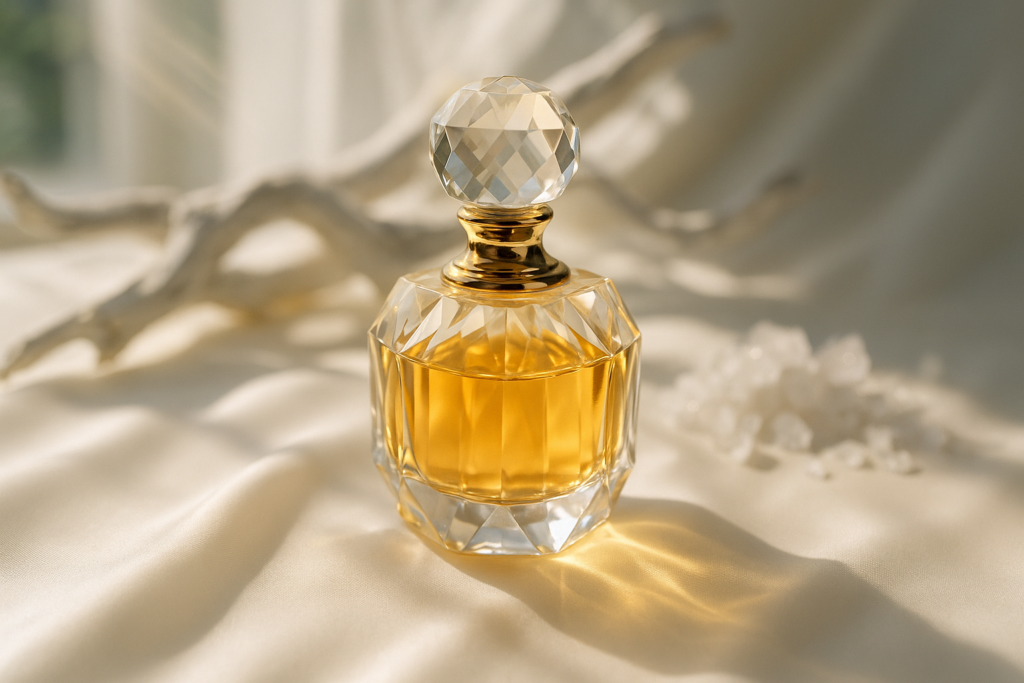
Explore More Fragrance Guides
- What Is Oud in Perfumery? The mystique of liquid gold.
- What Is Musk in Perfumery? From animal origins to modern white musks.
- What Is Saffron in Perfumery? The spice of luxury in fragrance.
- What Is Iris in Perfumery? Powdery elegance and the blue gold of fragrance.
- Perfume Layering: The Complete Guide.
I may earn a commission if you buy through links on this page, at no extra cost to you. As an Amazon Associate, I earn from qualifying purchases. I only recommend fragrances I’ve tested or genuinely believe in.
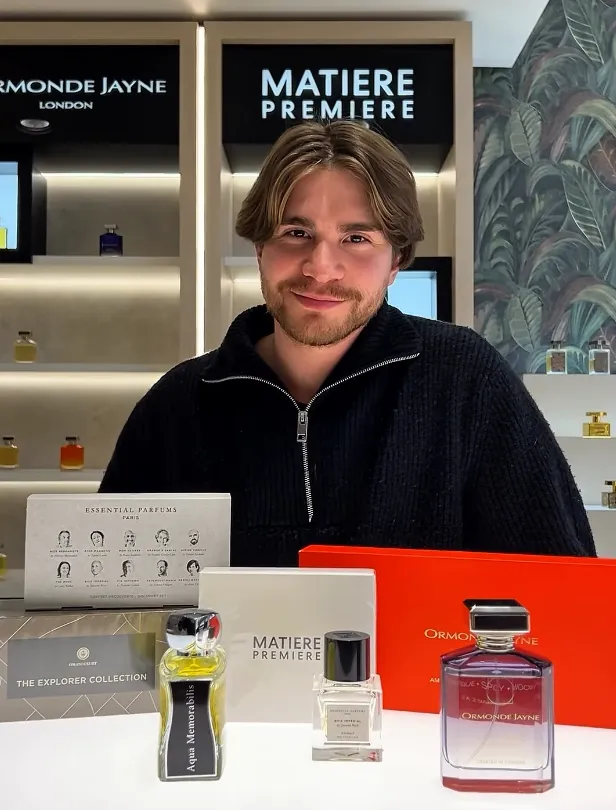
About Rodrigo Hernández
Fragrance consultant at Liquo (Santiago, Chile). I test designer and niche releases weekly, keep personal wear logs, and cross-check notes and performance in different climates. Opinions are my own; no brand pays for favorable coverage.
Contact: contact@scentchronicles.com

